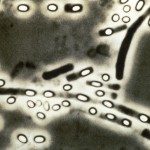Link to Pubmed [PMID] – 12034096
Vaccine 2002 Jun;20(21-22):2702-12
Stable chromosomal constructs of attenuated DeltaactA and wild-type Listeria monocytogenes expressing the Leishmania major protein LACK were tested as live vaccine vectors in the Th2-orientated chronic L. major murine infection model. These vectors, either by intraperitoneal (i.p.) or intragastric (i.g.) route, were able to induce a strong CD4 Th1 immune response that was correlated with slower parasite growth in the infected footpad. Significant protection against L. major infection was observed in BALB/c mice, ranging from delay in the lesion onset to full protection in 80% of the challenged animals, depending on the size of the parasite inoculum challenge. The i.g. route gave clinically higher protection level than the i.p. route. Both bacterial vectors were as efficient, suggesting that the extent of in vivo bacterial dissemination and multiplication did not seem to be a key parameter for induction of an efficient protective immune response.

